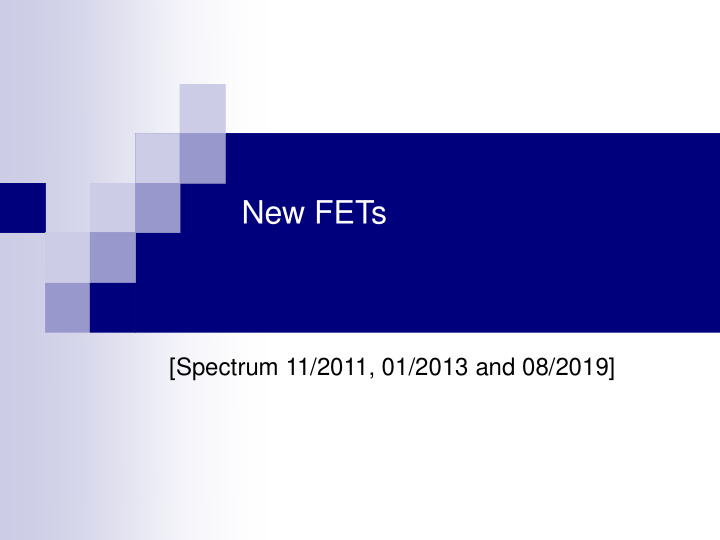



New FETs [Spectrum 11/2011, 01/2013 and 08/2019]
The smaller you make a CMOS transistor, the more current it leaks • between gate and channel • silicon oxide insulator replaced with hafnium oxide , reducing the tunneling of electrons • between source and drain when it’s switched off (small distance between source and drain -> poor gate control) • thin silicon channel turned by 90 degrees, creating a “ fin ” • - gate brackets the channel on three sides
• Cadence has already spent some 4000 man-years overhauling computer code for today’s generation of chips so that processor operation can be simulated in a realistic time frame • It will cost the foundries and their partners some US $6 billion to develop the manufacturing process and the computational tools needed to make14-nm and 16-nm chips
[Spectrum, Aug 2019] • Right now, 7 nm is the cutting edge • Samsung and TSMC are moving to the next node, 5 nm • following node: 3 nm • limited manufacture around 2020 • completely new design FinFET’s shortcomings 1. more width -> more current -> faster switch • the transistor fins can’t vary very much in height without interfering with the interconnect layers 2. gate surrounds the fin on only three sides -> some leakage current when the transistor is off
Evolution of the FET
Gate-all-around, or stacked nanosheet FET Sacrificial layers, selective chemical etchants, and advanced atomically precise deposition technology are needed to make nanosheets
And then? • To a large degree, what’s at issue here is heat • power density limited to about 100 watts per cm 2 • more energy-efficient transistors are needed • Potential solution: new materials for the channel • faster electrons -> lower V DD • Ge, GaAs, InGaAs • n-type InAs and p-type GaSb (gallium antimonide) • SiGe (because Ge still has some manufacturing process and reliability issues)
Recommend
More recommend